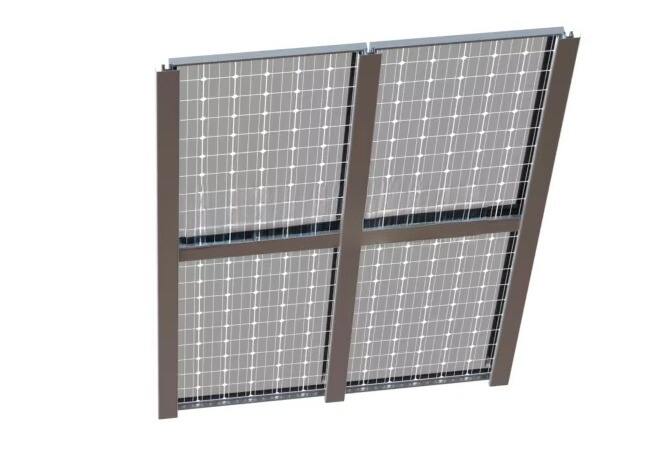Rel kereta surya mengacu pada sistem rel horizontal atau vertikal yang menjadi bagian dari struktur pemasangan, menyediakan kerangka stabil tempat panel surya dipasang. Rel ini merupakan komponen penting dalam sistem surya baik yang dipasang di atap maupun di tanah, berfungsi sebagai lapisan perantara antara struktur penopang (kuda-kuda atap, tiang di tanah) dan panel surya itu sendiri. Terbuat dari paduan aluminium berkualitas tinggi (6063-T5 adalah standar) atau baja galvanis, rel panel surya dirancang agar ringan namun kuat, dengan sifat tahan korosi untuk bertahan terhadap kondisi luar ruangan seperti hujan, radiasi UV, dan siklus suhu. Rel aluminium umumnya memiliki lapisan anodized (ketebalan ≥10μm) untuk meningkatkan daya tahan, sedangkan rel baja menggunakan pelapisan seng atau powder coating untuk mencegah karat. Rel panel surya dirancang dengan slot-T atau lubang bor sebelumnya sepanjang panjangnya, memungkinkan pemasangan klamp panel dengan mudah (klamp ujung untuk panel tepi, klamp tengah untuk panel bersebelahan) serta memastikan kemampuan penyesuaian agar sesuai dengan berbagai ukuran panel (60-sel, 72-sel, atau 96-sel). Jarak antar rel biasanya 1–1,5 meter (tergantung dimensi panel) untuk mendistribusikan beban panel secara merata, mencegah panel melengkung atau mengalami tekanan berlebihan. Pada sistem atap, rel dipasang sejajar dengan kuda-kuda atap, dikaitkan dengan braket yang mengangkatnya 5–10 cm di atas permukaan atap untuk memungkinkan drainase air. Pada pemasangan di tanah, rel dipasang pada balok melintang horizontal yang ditopang oleh tiang vertikal, dengan sudut kemiringan dioptimalkan untuk paparan sinar matahari. Panjang rel bervariasi (3–6 meter) untuk meminimalkan sambungan, mengurangi waktu pemasangan dan titik kegagalan potensial. Kepatuhan terhadap standar seperti IEC 62715 dan UL 2703 memastikan bahwa rel panel surya memenuhi persyaratan beban (hingga 6 kN/m² untuk salju dan 2 kPa untuk angin). Baik dalam sistem residensial, komersial, maupun berskala utilitas, rel panel surya menyediakan fondasi yang kuat dan dapat disesuaikan, menyederhanakan pemasangan panel, memastikan penjajaran yang tepat, serta berkontribusi pada integritas struktural keseluruhan sistem tenaga surya.
